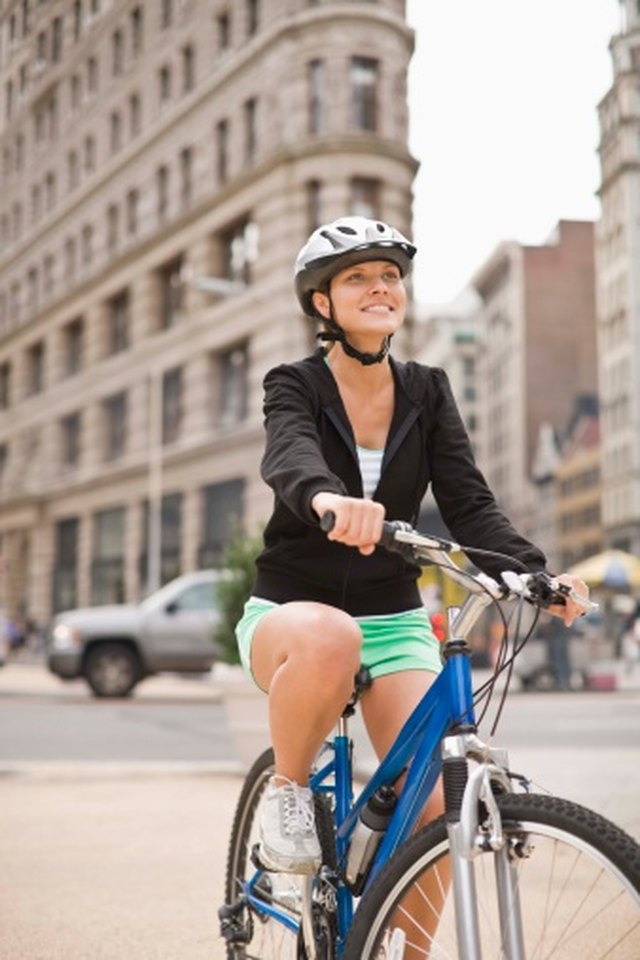What does fact checked mean?
At SportsRec, we strive to deliver objective content that is accurate and up-to-date. Our team periodically reviews articles in order to ensure content quality. The sources cited below consist of evidence from peer-reviewed journals, prominent medical organizations, academic associations, and government data.
The information contained on this site is for informational purposes only, and should not be used as a substitute for the advice of a professional health care provider. Please check with the appropriate physician regarding health questions and concerns. Although we strive to deliver accurate and up-to-date information, no guarantee to that effect is made.
Bicycle Seats for Sciatica

For bicyclists, an ergonomic and properly positioned bicycle seat is essential for preventing back problems such as sciatica, a painful condition caused by compression to the sciatic nerve that extends from the pelvis and down the back of each leg. A good bicycle seat for preventing sciatica pain and other back problems promotes an upright sitting position that doesn't place excessive strain on the low back. However, several factors unrelated to the bicycle seat, such as handlebar positioning and hamstring flexibility, may also influence whether you experience sciatica pain while cycling.
Seat Angle
Between 30 percent and 70 percent of bicyclists experience painful low back problems such as sciatica, according an in-depth health guide written by A.D.A.M., Inc. and published by "The New York Times." However, simply adjusting the angle of the bicycle seat may prevent cycling-related back pain --- according a 1999 study published in "British Journal of Sports Medicine," among a sample of recreational bicyclists suffering from low back pain, 70 percent were able to reduce their pain by adjusting the bike seat to create an anterior-inclining, or upward-tilting, angle. While a downward-tilted seat angle is often preferred by cyclists for its more efficient speed-profile, cycling with a downward-tilted seat puts strain on the low back, which can lead to or exacerbate back problems, including sciatica.
Seat Type
In addition to the seat angle, certain types of bicycle seats may be better for sciatica than others. Sitting on a hard bicycle seat for lengthy periods of time can put excessive pressure on the low back and nerves that go through the pelvis, potentially causing or or worsening sciatica. According to a 2004 article published in "Massage Therapy Journal," using a soft, split-saddle or nose-less bicycle seat encourages good posture while cycling to prevent repetitive stress injuries and nerve impingement. These types of bike seats allow the sit-bones -- which are designed to withstand long periods of sitting -- to bear the majority of your bodyweight, placing your spine in an upright position. Some of these ergonomic bike seat models include the BiSaddle, the DDwings Ergonomic Bike Saddle, the Hobson Bike Seat, the Spongy Wonder Bike Seat and The Seat.
Considerations
While the positioning and type of bicycle seat you use when cycling can cause sciatica pain, these are not the only factors that can that contribute to sciatica in cyclists. For example, your bicycle's handlebar positioning may encourage poor posture when cycling, leading to sciatica and other problems. Maintaining flexible hamstrings is also important for sciatica pain prevention, particularly for cyclists. Strong low-back and abdominal muscles are important for preventing back pain and injuries as well. In addition, while regular exercise is good for sciatica, excessive exercise, such as cycling for many hours at a time without resting, can cause low back problems.
Tips
To prevent low-back pain while cycling, it is important to maintain good, upright posture. Taking frequent breaks when bicycling can help prevent muscle fatigue that may cause you to slouch. Besides buying an ergonomic bike seat and positioning it at an anterior-inclining angle to maintain an upright seating position when biking, you can also buy specially shaped handlebars or handlebar extensions that allow for more upright riding. Stretching the hamstrings and other muscles before and after exercising is also important for preventing cycling injuries and sciatica pain. According to sports injury specialist Ben E. Benjamin, a cyclist with sufficiently flexible hamstrings should be able to place the hands or finger tips on the floor while standing and bending forward with straight legs. If you are unable to touch the ground with your knees extended, your hamstrings are too tight.
References
Resources
Writer Bio
Shannon George, former editor-in-chief of the trade magazine "Prime," holds a Bachelor of Arts in English from San Diego State University. Her health interests include vegetarian nutrition, weight training, yoga and training for foot races.
